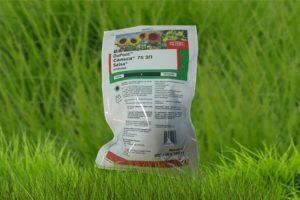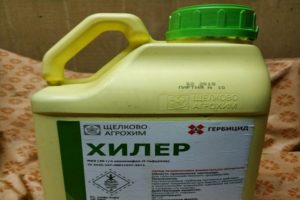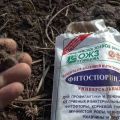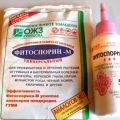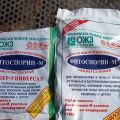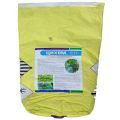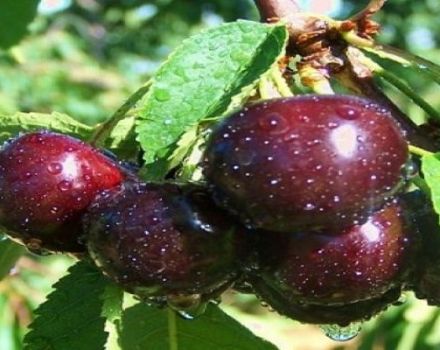Instructions for the use of the fungicide Fitosporin, consumption rates and analogues
Fitosporin is a modern and effective remedy for combating fungal and viral plant diseases. The drug is suitable for any crops - both for flowers and for fruit and vegetable crops, therefore it is very popular among gardeners and gardeners. Consider the instructions for using the fungicide Fitosporin and figure out how and in what cases it is most effective to use this remedy.
Content
- 1 Description, release form and principle of action of the drug
- 2 Advantages and disadvantages of the fungicide Fitosporin M
- 3 Application area
- 4 Dosage and timing of application
- 5 Preparation of working solution
- 6 Features of use
- 7 Safety engineering
- 8 Drug toxicity
- 9 Compatibility with other substances
- 10 Terms and conditions of storage of funds
- 11 Analogs
Description, release form and principle of action of the drug
Fitosporin is one of the most powerful fungicides used to treat plants. The drug belongs to the class of bacterial fungicides. It contains only components that are harmless to plants..
After treatment of the plant with the drug, a spore bacterium is activated, it begins to feed and produce waste products. Those, in turn, have a detrimental effect on fungi and harmful microorganisms. The fungicide is produced in the form of powder, paste, and also a liquid suspension.
Advantages and disadvantages of the fungicide Fitosporin M
The main advantage of the product is considered its safety for plants, as well as the ability to retain its properties at low and high air temperatures. Under unfavorable conditions for the vital activity of spore bacteria, which are the basis of the drug, they suspend their activity, but when conditions improve, they continue to act.
Application area
An agent is used to combat and prevent almost any diseases of plant crops caused by the action of fungi and harmful bacteria. It helps well in the fight against all types of rot, bacteriosis, powdery mildew, mold, rust, and so on.
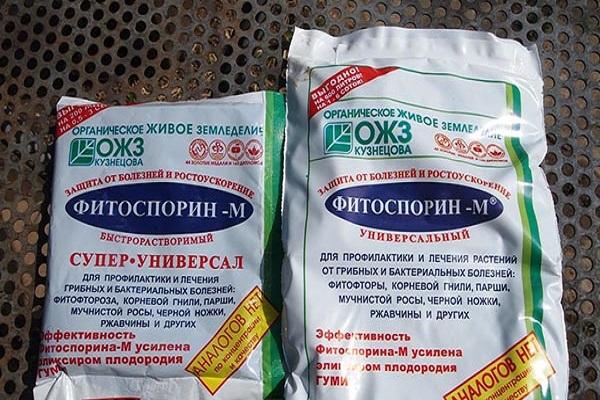
Dosage and timing of application
The dosage and timing of Fitosporin application depend on the specific culture, treatment method and diseases for the prevention or treatment of which the drug is used.
Garden flowers
For the prevention of diseases of indoor flowers, a dosage of half a teaspoon of the powder preparation is used for two liters of water.
To treat flowers from diseases, the ratio of powder to water should be doubled.
For cabbage
For cabbage, a dosage of six grams of fungicide per ten liters of water is used. The cabbage is processed by spraying the leaves, the procedure is repeated two weeks later.

For potatoes
For potatoes, the optimal dosage is ten grams per five liters of liquid.
For cucumbers
The dosage is the same as for potatoes. Spray three times, at intervals of approximately two weeks.
For tomatoes
For tomato crops, use a dosage of five grams per ten liters.

Preparation of working solution
The solution must be prepared immediately before use, no more than two hours in advance, as it quickly loses its properties. When using the powder, there will be about three grams of the product in a teaspoon. Use soft water at room temperature, no less than fifteen and no more than thirty-five degrees Celsius.
Features of use
There are certain features of using the product for different types of crops.
For indoor flowers
Indoor flowers are processed by spraying. Processing should be done during the growing season. The optimal treatment ratio is ten drops per liter.

For vegetables
When processing vegetables for most varieties, the procedure should be repeated at intervals of about once a month.
For trees and shrubs
For spraying fruit trees, a dosage equal to four teaspoons per liter of liquid is used.
For seedlings
Fitosporin is used to treat seedlings. It can be used both in seed treatment and at the stage when the first leaves grow in plants. When fighting fungal diseases, the first result becomes noticeable after a few days.
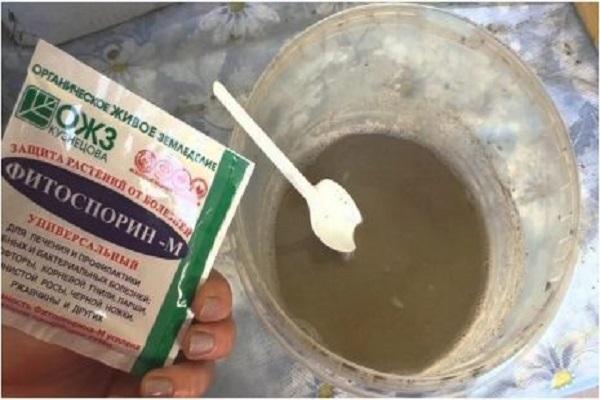
Greenhouse disinfection
The preparation can be applied to the greenhouse at any time of the year, before planting. The solution is sprayed onto the walls and the soil is disinfected.
Soil treatment
It is recommended to cultivate the soil in the spring, before planting. Five grams of powder per liter of water is enough to treat one square meter of area.
Safety engineering
When carrying out the processing procedure, be sure to use special suits, masks and rubber gloves. Avoid contact with exposed skin and eyes. The drug can cause rashes and damage to human mucous membranes. In case of contact with the skin, rinse the affected area thoroughly with clean water. If the drug enters the esophagus, gastric lavage should be performed.
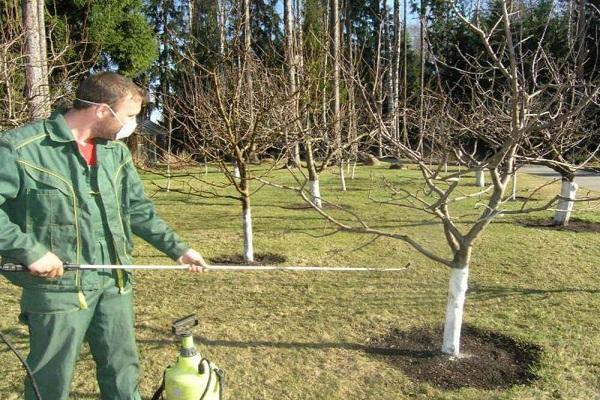
Drug toxicity
Fitosporin belongs to the fourth class of danger to humans. If it comes into contact with open areas of the body, the solution can provoke rashes, as well as damage the mucous membranes.
Compatibility with other substances
Fitosporin is compatible with almost any fungicide, insecticide and plant growth stimulant. However, Fitosporin in the form of a paste is not recommended to be combined with stimulants. This is due to the content of humic acids in the paste, which conflict with the active substances of stimulants.
To check compatibility, you need to mix the two drugs in small amounts.
If a precipitate does not form in the solution, then the funds can be considered compatible.
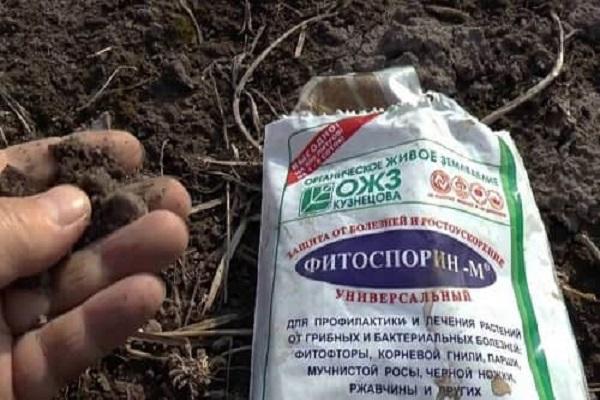
Terms and conditions of storage of funds
The powder should be stored in a dry place, out of the reach of children, at temperatures from zero to thirty degrees Celsius.
The solution should be prepared immediately before processing the plants, correctly calculating the required amount, since the remnants of the finished solution cannot be used next time.
Analogs
The closest analogues of the fungicide Fitosporin are Alirin and Gamair.They contain the same spore bacteria as Fitosporin, therefore, the principle of action and effectiveness of the funds are similar.
